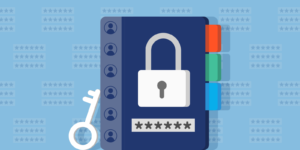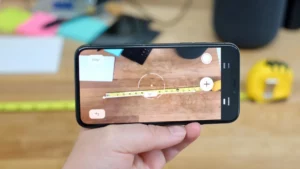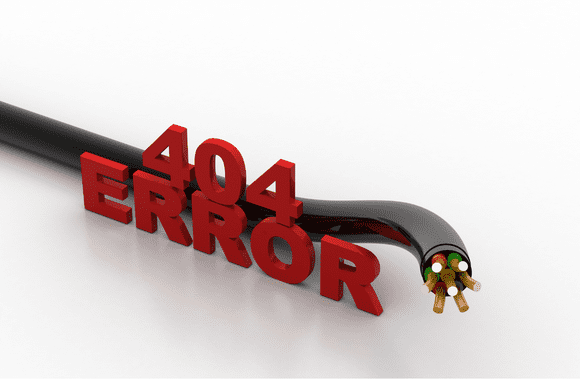Is your Windows computer showing a “can’t connect to this network” error even though your Wi-Fi connection is active and strong? Don’t be concerned. Because we have often had this problem in compiling this “how to solve” guide, we can empathize with how aggravating it is for you.
This error message tells us we could not establish a wireless connection, but it does not say why. It’s the same as ringing the doorbell at the front desk and then not saying anything when the receptionist comes to answer it.
Even though the parallels are strange, we can still isolate the cause of your Windows computer’s “can’t connect to this network” error and fix it.
“Can’t Connect To This Network” Error Guide
What Is a “Can’t Connect To This Network” Error In Windows? What Causes It?
This is a fairly common occurrence if your computer is having trouble connecting to a network or going online. Data transmission and reception are both impossible while your system is not online.
From improper network configuration to faulty driver software, a wide variety of issues could be at the root of this behavior. The “can’t connect to this network” error in Windows 10 typically occurs because of the following problems:
- Outdated drivers
- Incorrectly configured settings
- Software bugs
- Congested network
- Mandatory user authentication
- Hardware issue
- Problem on ISP’s end
10 Ways You Can Fix “Can’t Connect To This Network” Error
Make sure you’ve already tried power cycling the modem and router, getting in touch with your ISP, moving closer to the router, and reducing the number of devices connected before attempting these.
Additional authentication may also be needed to access the internet while using a public network. Keep an eye on the new tabs that open in your browser after joining such a network, or open it manually and see what comes up. You may be prompted to connect to the network at this time; if so, enter your credentials so that you can browse the web.
After doing these steps, you can be assured that the issue does not lie within your system and go on to the following fixes:
You should note that the methods discussed in this article are examples of general approaches.
Forget Network And Connect Again
You may have to turn off and back on your Wi-Fi if your router’s settings or your network’s password are altered. The following are the measures you can take to achieve this:
- To access “Settings,” press the Windows and “I” keys simultaneously.
- To access the web and networks, click the appropriate tab.
- Choose WiFi from the left-hand menu, then click “Manage known networks.”
- Choose your network and then hit the “Forget” button.
- Click the “Back” button in the top left corner, then select “Show available networks.”
- Connect to your network by selecting it, entering the password, and then pressing enter.
Turn Airplane Mode On And Off
Sometimes, you’ll need to disconnect your desktop/laptop completely to fix any underlying connectivity issues. Putting the device into Airplane Mode and then taking it out of that mode will do the trick.
- To access Windows’s notification hub, click its icon (the dialog box icon at the bottom-right of the taskbar).
- The “Airplane mode”/”Flight mode” can be activated by selecting “Expand” and tapping the corresponding button.
- To turn off Airplane Mode, click it again after a few seconds.
Troubleshoot Network Issues
In Windows, you can utilize the in-built tools specifically designed to find issues with your network. Start the Network Troubleshooter by following these steps.
- Select “Network & Internet” from the “Settings” menu.
- Scroll down and choose the option labeled “Network troubleshooter.”
- The diagnostic tool will now run to look for problems. Find and fix the issues by following the on-screen prompts.
Troubleshoot Network Adapter Issues
You’ll need a network adapter if you want to talk to other computers in your network. Scanning the network card can reveal hidden problems. To troubleshoot a network adapter, do the following:
- Access “Update & Security” from the “Settings” tab.
- In the column to the left of “Troubleshoot,” click “Additional troubleshooters.”
- After locating “Network Adapter,” select “Run the troubleshooter.”
- To find and fix adapter problems, just follow the on-screen instructions.
Manually Set Up A New Connection
In rare situations, the standard methods of establishing a network connection might not function. As a result, if you’re having trouble with the typical way, you should try manually configuring your connection to see if that helps.
- To access “Network & Internet,” go to the “Settings” section.
- Navigate to the “Network and Sharing Center” link.
- Click on the “Set up a new connection or network” button.
- After that, click “Manually connect to a wireless network.”
- Click “Next” and follow the on-screen prompts to complete the installation after entering the required network details.
Reset Network Settings
The error message “cannot connect to this network” may result from improperly configured network settings. Resetting a network to its factory settings entails performing the following actions:
- Access “Network & Internet” from the “Settings” menu.
- Click the “Network Reset” option.
- Use the “Reset now” button to begin the process.
Install Windows Updates
This network trouble can result from faulty software, as previously mentioned. Windows releases updates frequently to fix these and other issues. Therefore, always using the most recent version of Windows is in your best interest. To achieve this, follow these steps:
- From the Settings menu, choose “Update & Security.”
- Use the “Check for updates” option to find the most recent update.
- Choose “Download and install” to apply the upgrade.
- To apply the new settings, you’ll need to restart your computer.
Reinstall Network Adapter Driver
A connection cannot be made without the network adapter driver, a piece of software that assures the proper functioning of the necessary hardware. The driver may become corrupt over time, which will disrupt network connectivity. You can fix the issue by reinstalling your network card’s driver.
- To launch Run in Windows, just press Windows+R.
- You can now open Device Manager by typing “devmgmt.msc” and hit the Enter key.
- Select “Network adapters” to reveal the submenu. Take note of the entire identity of the network adapter driver as well.
- If you right-click the wireless adapter driver, you can remove it.
- To remove it, just stick to the on-screen prompts.
- After a restart, Windows should automatically install the necessary driver. If it doesn’t work, read on.
- Find the manufacturer’s website for your network adapter using the name you scribbled earlier, and then download the driver. To install it manually, just follow the on-screen prompts.
Update Network Adapter Driver
If reinstallation fails, you can update the driver using the instructions below.
- To fix this again, repeat steps 1-3 from the last time you fixed it.
- Using the right mouse button, choose “Update driver” when prompted to do so after selecting the Wi-Fi driver.
- To have the system seek out updated drivers automatically, choose that option and then follow the on-screen prompts.
Try These CMD Commands
Your IP configuration could be a problem if it has nothing to do with hardware or drivers. You can fix the problem by entering specific instructions into the Command Prompt window.
Following these commands will renew your IP address, clear the network cache, and restore your computer’s internet connection settings. These are the steps to take:
- To open a command prompt, select the magnifying glass in the bottom right of your screen and then type “cmd.”
- When prompted, select “Yes” and right-click the “Command Prompt” result to run it with administrative privileges.
- Without the quotes, type “netsh winsock reset,” “netsh int ip reset,” “ipconfig /release,” “ipconfig /renew,” and “ipconfig /flushdns,” respectively.
- You must then restart your computer for the changes to take effect.
All the options for fixing the “can’t connect to this network” error have been listed. One of these suggestions should have worked for you. Your ISP is likely to blame if they did not. Perhaps the two of you need to talk.
FAQs
What does it mean when you can’t connect to a network?
This means that Windows is aware of the network’s existence but cannot establish a connection for whatever reason, whether it is a missing driver or improperly specified preferences.
What to do if you encounter a problem with your network connection?
You can attempt resetting network settings, clearing the cache, updating relevant drivers, etc., if Windows cannot connect to a network.
Why am I getting the “can’t connect to this network” issue even with the correct password?
Even though you entered the correct password, you may still be having trouble. Driver incompatibilities, router configuration changes, out-of-date Windows versions, and other factors fall into this category.



